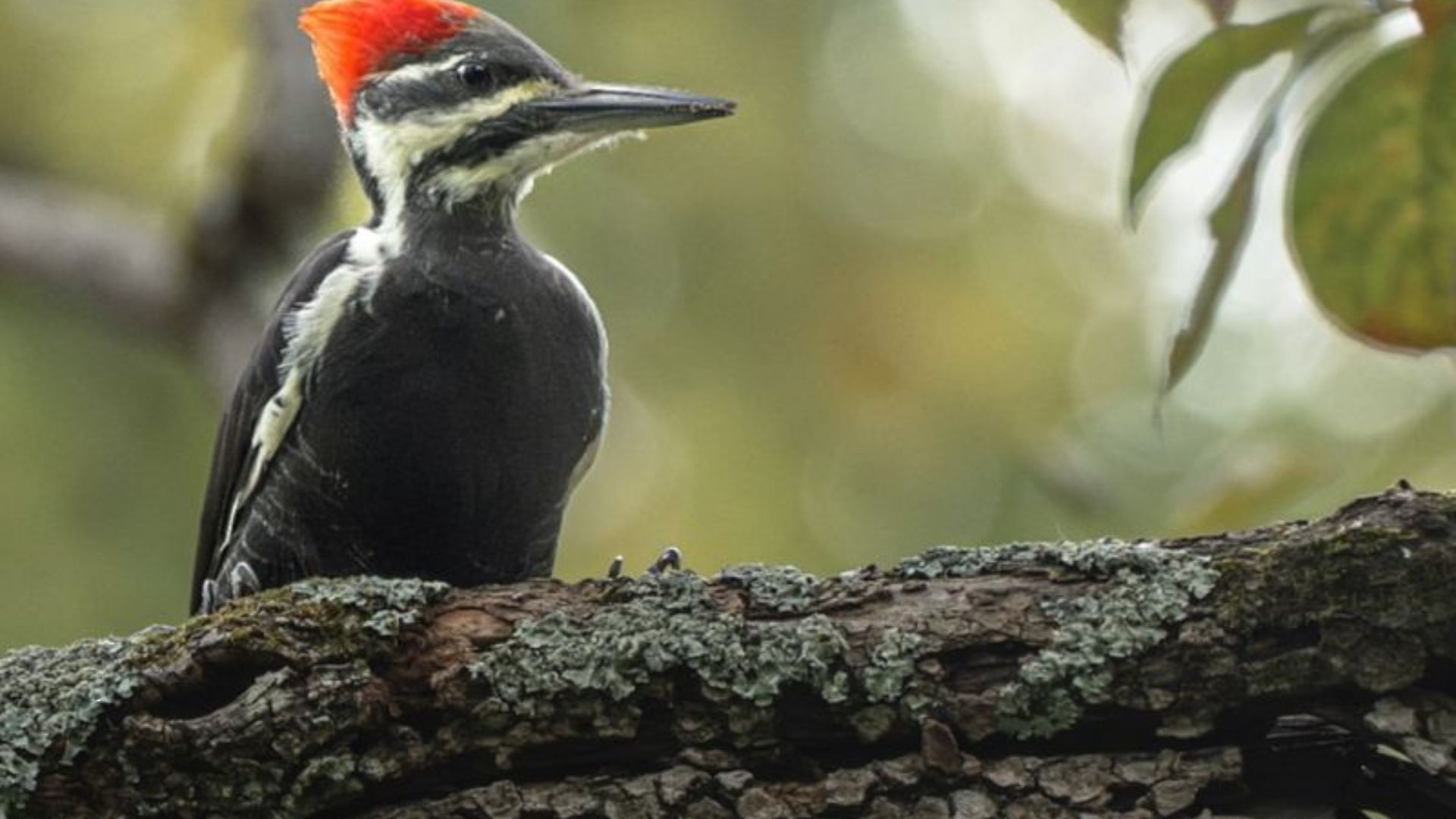The Pileated Woodpecker, one of North America’s most iconic forest birds, is truly a marvel to watch. With its bold appearance and intriguing behaviors, it’s no wonder this bird is often seen as a symbol of the wild. But there’s more to the Pileated Woodpecker than just its good looks.
From its impressive size to its unique habits, this bird offers endless fascination for nature lovers. Let’s explore the compelling reasons why the Pileated Woodpecker deserves a place as one of your all-time favorite birds.
1. Striking Appearance
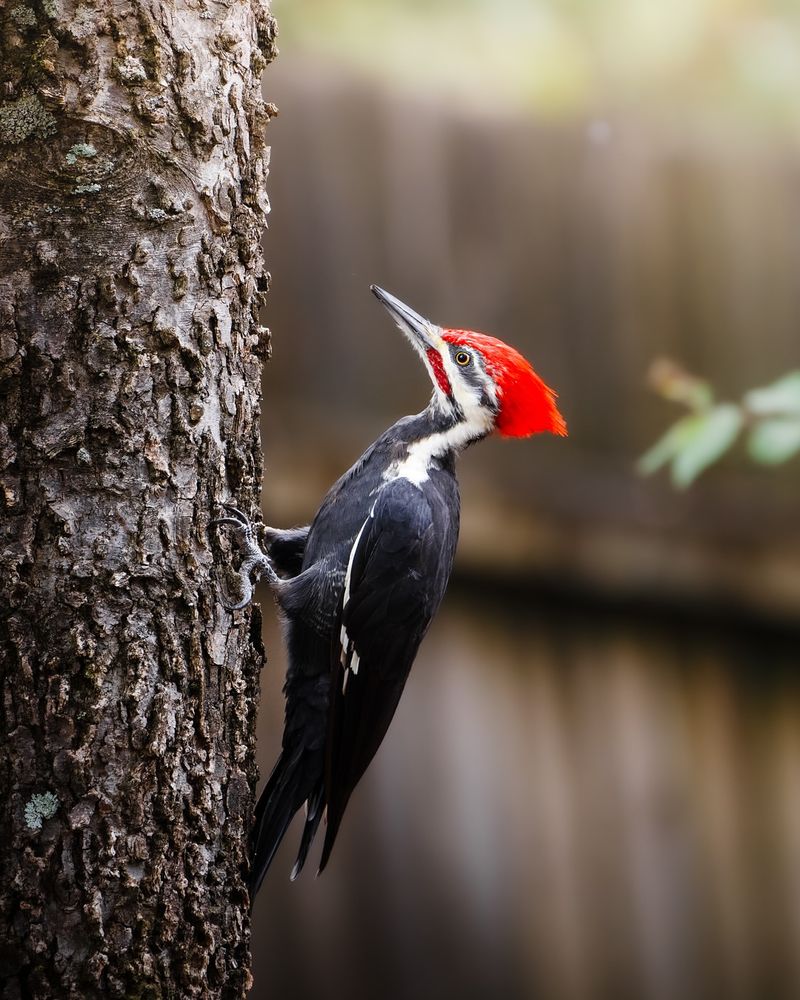
The pileated woodpecker is undeniably a striking bird. Its vivid red crest and contrasting black and white plumage make it stand out in any forest. This large woodpecker is about the size of a crow, making it one of the biggest woodpeckers in North America.
Its loud, resonant drumming and distinctive calls add to its unique presence. Spotting one of these birds can be a thrilling experience, as they are often heard before they are seen. Their ability to disappear in the dense foliage when they want to adds an element of mystery.
Its impressive wingspan is another highlight, providing a majestic sight as it glides through the trees. Watching a pileated woodpecker in action is like witnessing a work of art in motion. Each sighting is a reminder of the beauty and wonder that nature has to offer.
2. Unique Drumming Sounds
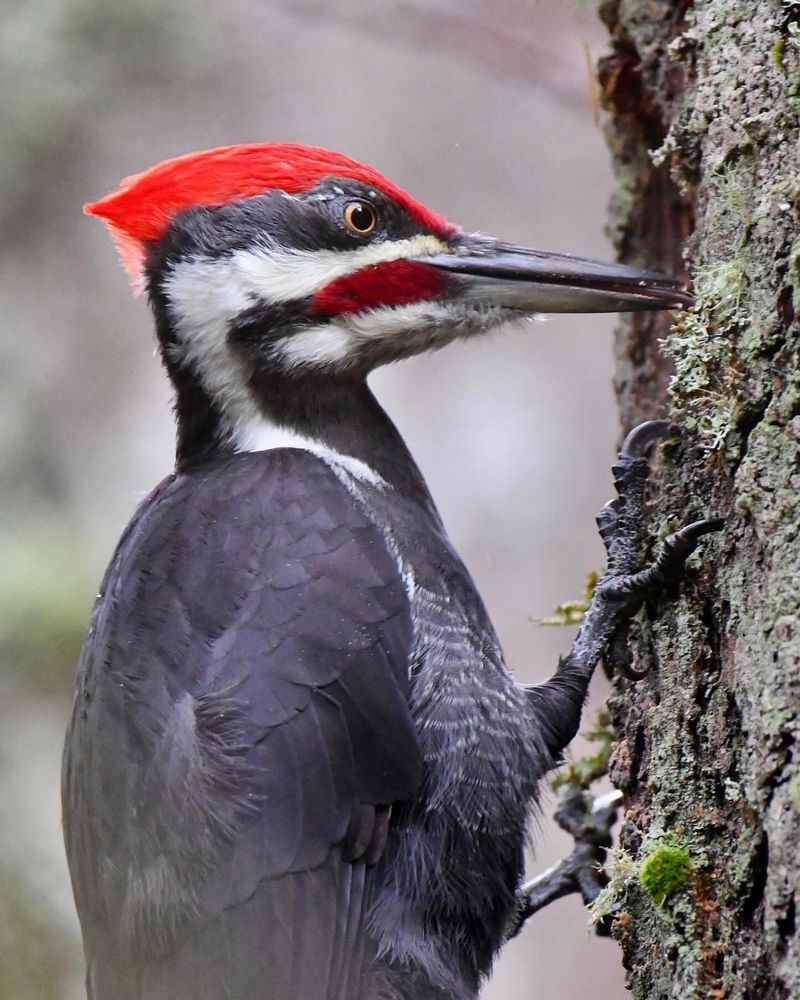
The drumming of a pileated woodpecker is as distinctive as its appearance. Unlike other birds, the pileated woodpecker drums not just to forage but also to communicate and establish territory. Its drumming resonates throughout the forest, echoing like a natural percussion instrument.
Each drumbeat is rapid and powerful, a testament to the bird’s strength and resilience. These woodpeckers can peck up to 20 times a second, a feat that might seem impossible for such a delicate creature.
Listening to their drumming is like enjoying a symphony composed by nature itself. For bird enthusiasts and casual nature lovers alike, the sound of a pileated woodpecker at work is a captivating experience that connects you to the forest in a unique way.
3. Ecosystem Engineers
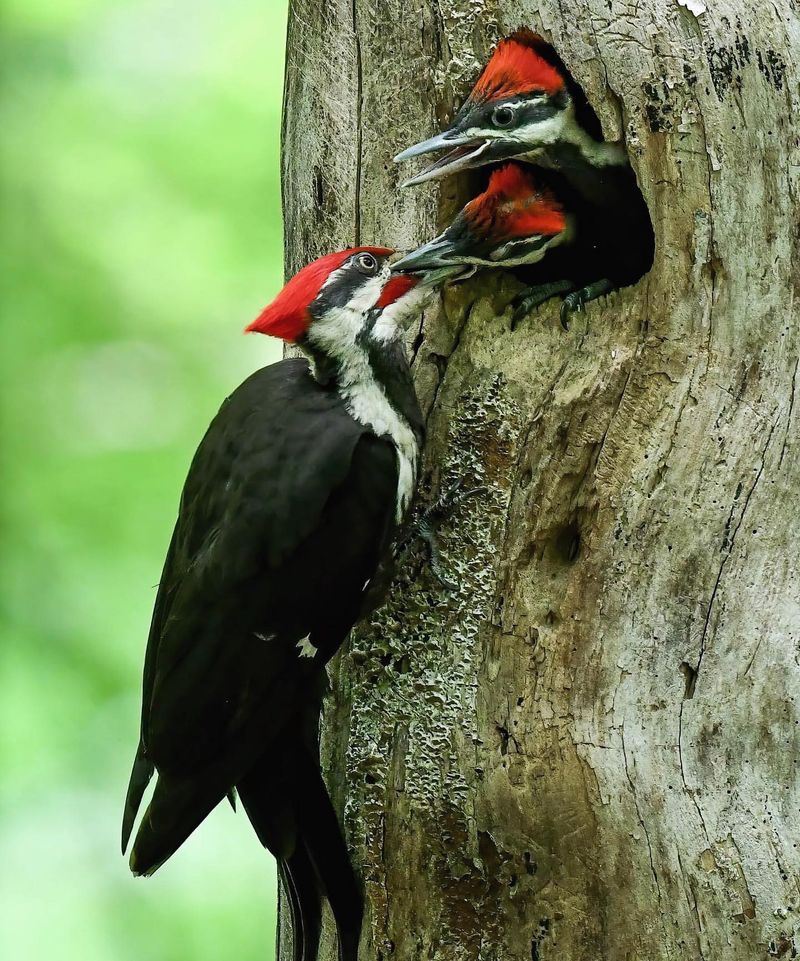
Pileated woodpeckers play a crucial role in their ecosystem by creating large cavities in trees. These cavities, initially made in search of insects, become homes for various other species once abandoned.
Owls, ducks, bats, and even some mammals make use of these ready-made shelters, highlighting the woodpecker’s role as nature’s engineer. The process of creating these cavities also helps control insect populations, particularly wood-boring beetles, which can be harmful to trees if left unchecked.
By facilitating these processes, the pileated woodpecker contributes significantly to the health and balance of forest ecosystems. Observing this natural engineering marvel at work offers insights into the intricate balance of nature and the interconnectedness of species.
4. Adaptability to Habitats
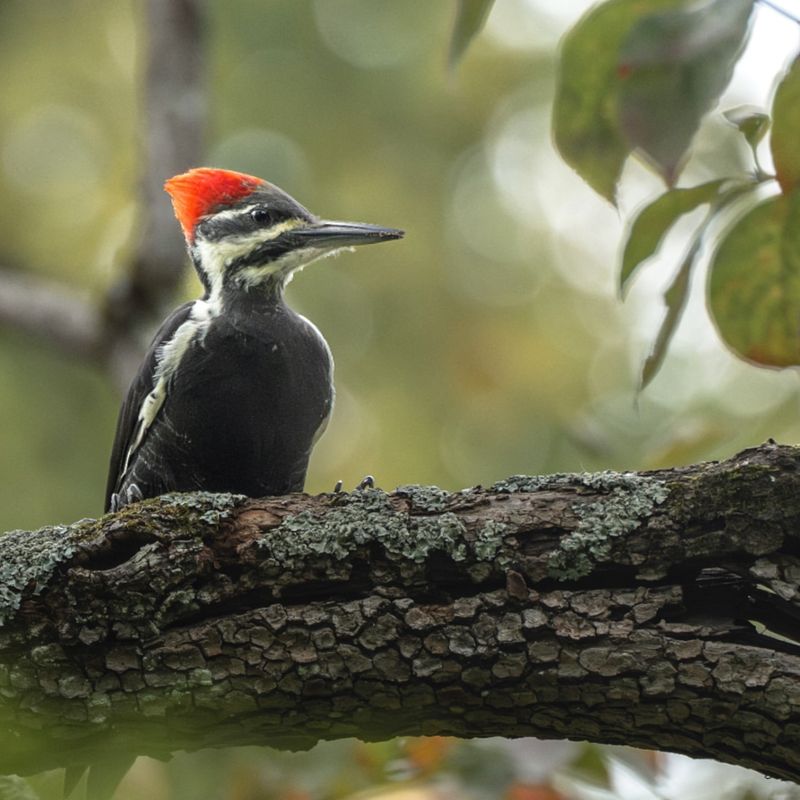
Pileated woodpeckers demonstrate remarkable adaptability to various habitats, not just limited to dense forests. They have been observed in urban parks, suburban areas, and even in backyards. This adaptability is part of what makes them so intriguing.
Their presence in diverse environments shows their ability to thrive despite changes in their traditional habitats. This resilience is a reminder of nature’s capacity to adapt and survive amidst human expansion.
For bird watchers, this means more opportunities to catch a glimpse of these fascinating creatures. Whether you live in the heart of the city or in rural areas, you might find yourself lucky enough to encounter a pileated woodpecker, bringing a piece of wild nature into everyday settings.
5. Fascinating Foraging Techniques
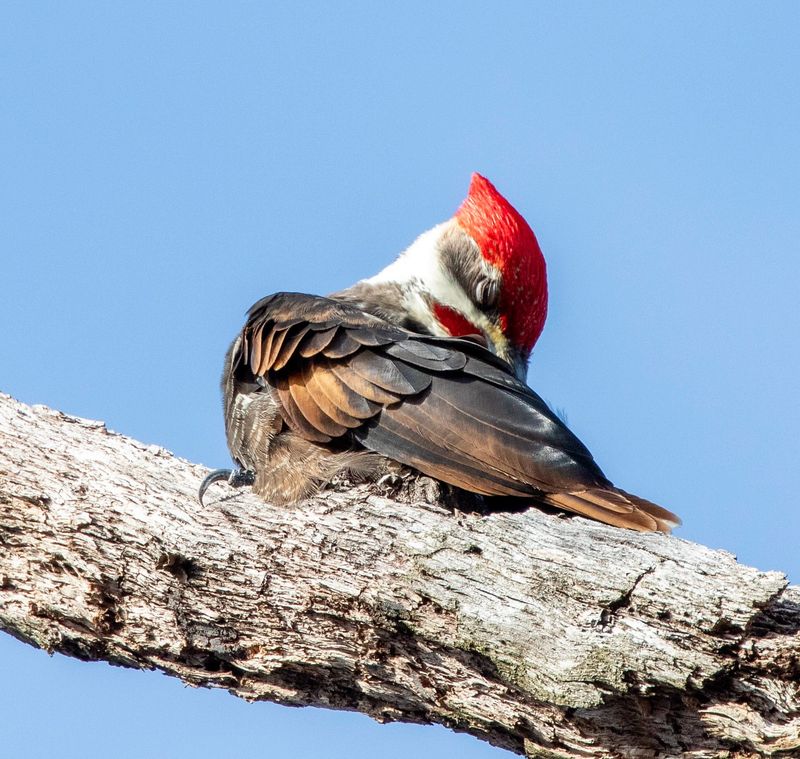
The foraging techniques of pileated woodpeckers are fascinating to observe. Using their strong, chisel-like beaks, these birds expertly extract insects from underneath tree bark. They primarily feed on ants and beetle larvae, playing a vital role in controlling insect populations.
Watching them in action is like witnessing a skilled craftsman at work. Each peck is precise and purposeful, driven by the bird’s innate ability to detect insect movements within the wood.
Their foraging not only nourishes them but also contributes to the ecological balance by keeping pest populations in check. For nature enthusiasts, observing these foraging techniques offers a deeper understanding of the complex relationships within forest ecosystems.
6. Cultural Significance
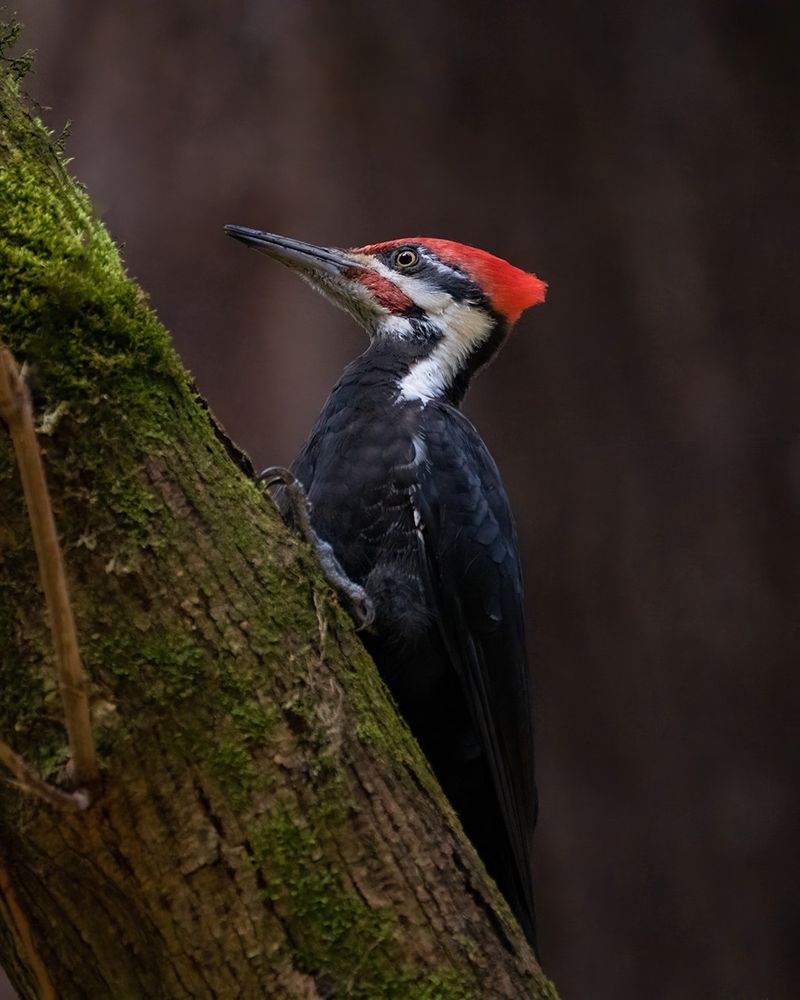
The pileated woodpecker holds cultural significance in various societies, prominently featuring in Native American folklore. Often seen as a symbol of persistence and determination, it inspires many through its tireless efforts and vibrant presence.
This bird has also found its way into modern art and literature, symbolizing the wild and untamed spirit of nature. Its distinctive appearance makes it a favorite subject for artists and writers seeking to capture the essence of wilderness.
Understanding the cultural importance of the pileated woodpecker provides a richer appreciation for this magnificent bird. It serves as a bridge between natural history and human culture, reminding us of the shared narratives that connect us to the natural world.
7. Impressive Lifespan
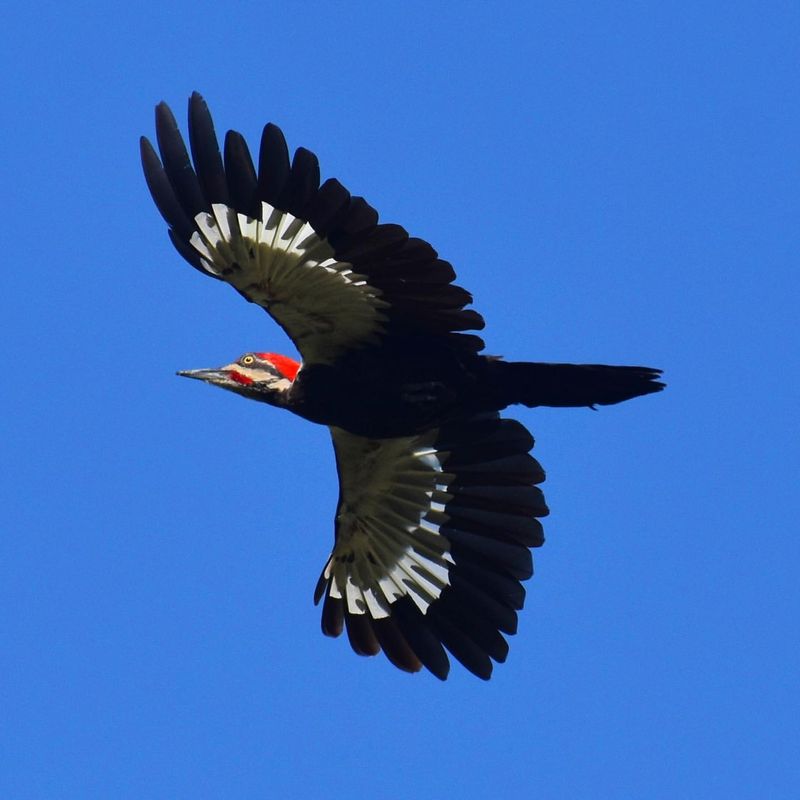
Pileated woodpeckers can live impressively long lives, often reaching up to 12 years in the wild. This longevity is attributed to their adaptable nature and the relatively low number of natural predators.
These birds invest heavily in raising their young, teaching them essential survival skills. Watching a parent woodpecker with its offspring offers a glimpse into the familial bonds and the transfer of knowledge across generations.
Their long lifespan allows the pileated woodpecker to play a continuous role in its ecosystem, maintaining ecological balance over the years. For bird enthusiasts, this longevity means more opportunities to study and appreciate these remarkable birds in their natural habitats.
8. Symbol of Conservation
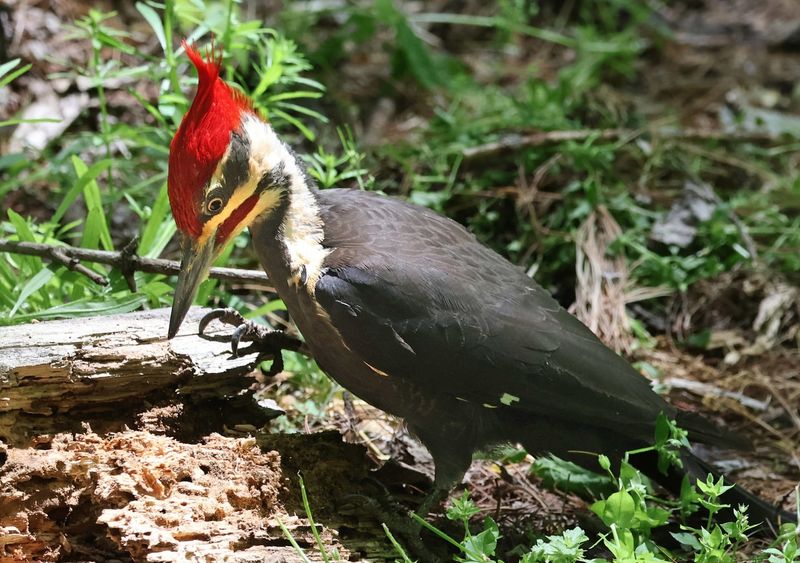
The presence of pileated woodpeckers is often an indicator of a healthy forest ecosystem. As such, they are considered a symbol of conservation success. Efforts to preserve their habitats have been fundamental in maintaining biodiversity in North American forests.
Conserving areas rich in old-growth trees is crucial for these birds, as it provides them with the necessary resources for nesting and foraging. These conservation efforts not only benefit the woodpeckers but also countless other species that share their habitat.
Embracing the pileated woodpecker as a symbol of conservation highlights the importance of protecting our natural world. It inspires actions towards preserving the delicate balance of ecosystems and ensuring that future generations can enjoy these magnificent birds.
9. Distinctive Calls
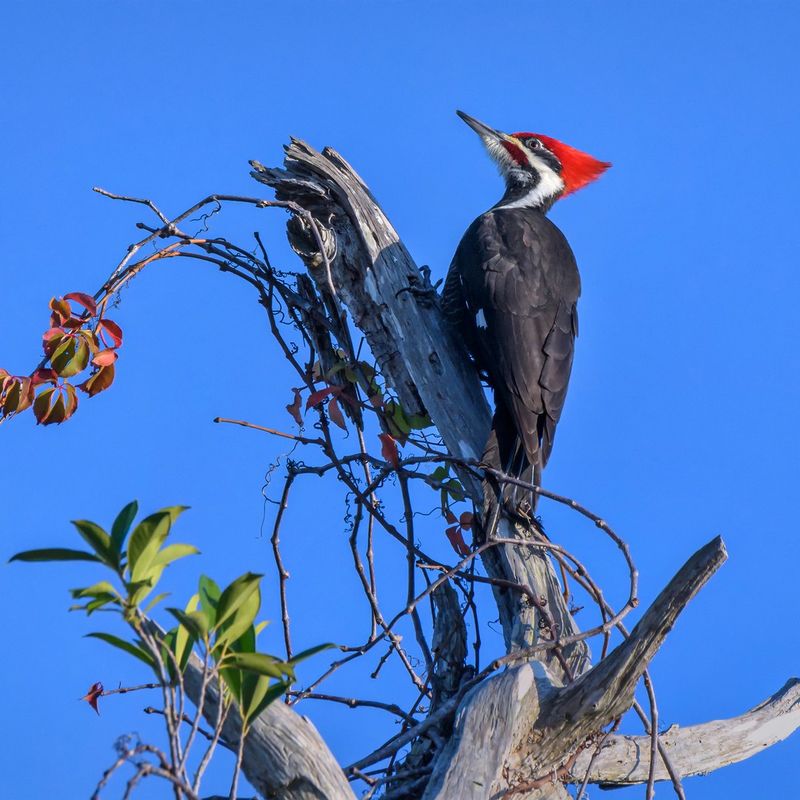
The calls of a pileated woodpecker are as distinctive as their appearance. Their loud, laughing calls can be heard echoing through the woods, serving as a communication tool with other woodpeckers.
These vocalizations play a crucial role in marking territory and attracting mates. For bird watchers, recognizing these calls can enhance the experience of observing these birds in their natural habitat.
The sound of their calls adds a vibrant layer to the forest soundscape, making every walk in the woods an auditory delight. For those interested in birding, learning to identify the calls of a pileated woodpecker can be a rewarding skill, deepening your connection with nature.
10. Majestic Flight
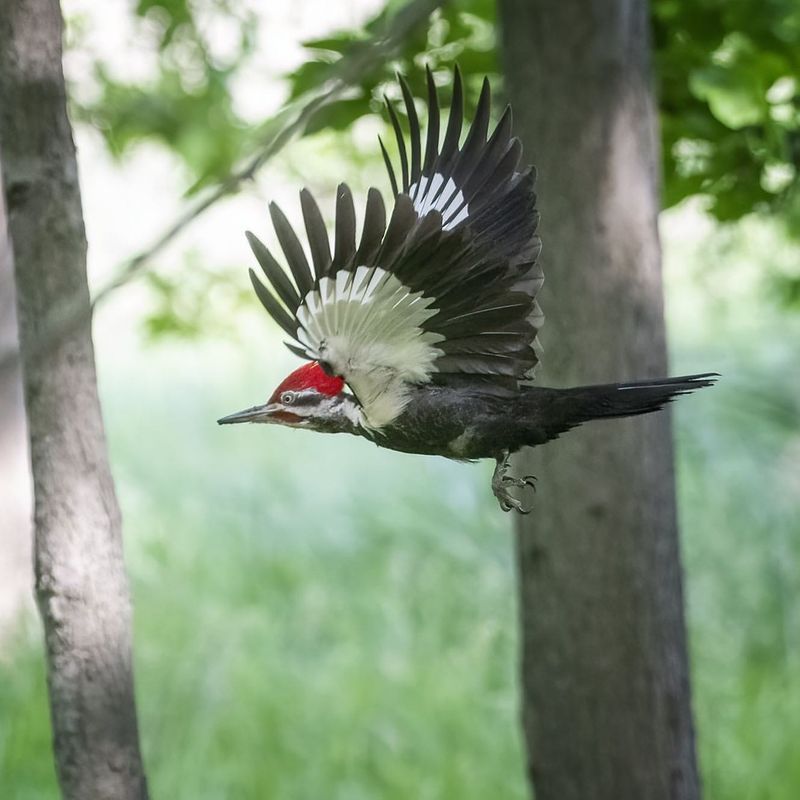
The flight of a pileated woodpecker is a majestic sight to behold. Its large wingspan allows it to glide gracefully through the forest, navigating through trees with ease. This fluid motion is both powerful and elegant, a true testament to the bird’s adaptation to its environment.
Observing this bird in flight provides insights into its remarkable physical abilities and its role within the ecosystem. The pileated woodpecker’s flight is not just about movement; it is an expression of freedom and survival.
For bird enthusiasts and nature lovers, witnessing a pileated woodpecker soar through the forest is an unforgettable experience. It’s a reminder of the beauty and complexity of avian life and the wonders that lie just beyond our backyards.

